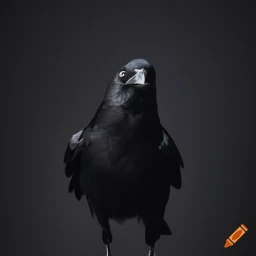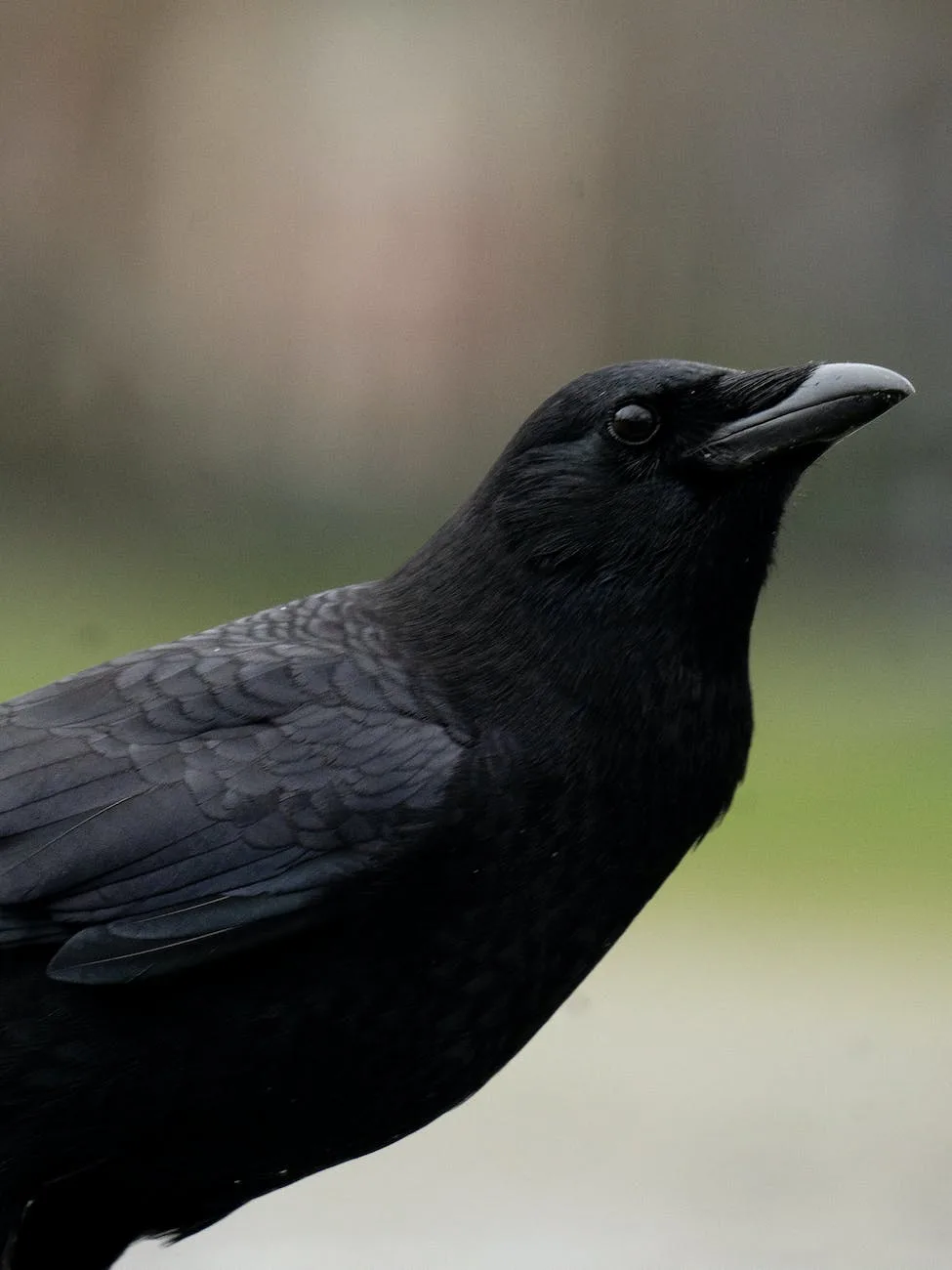In the Land of Wonders: Exploring Corvus Validus – Long-Billed Crow
December 30, 2023 | by BlackCrow.com

Meet the Corvus Validus – Long-Billed Crow
The Corvus Validus, also known as the Long-Billed Crow, is a fascinating bird species found in the Northern Moluccas. Let’s take a closer look at this unique crow and explore its distinctive characteristics.
Introduction to the Corvus Validus
The Corvus Validus, or Long-Billed Crow, is a member of the crow family known for its impressive bill length. This bird species is native to the Northern Moluccas, a region encompassing islands such as Halmahera, Morotai, and Ternate.
Long-Billed Crows are known for their intelligence, adaptability, and sociable nature. They are highly skilled at problem-solving and have been observed using tools to extract food from various sources. These crows are known to form large communal roosts, where they communicate and interact with other members of their species.
Physical Characteristics of the Long-Billed Crow
The Long-Billed Crow is characterized by its distinctively long bill, which sets it apart from other crow species. Here are some key physical features of the Long-Billed Crow:
- Size: The Long-Billed Crow is a medium-sized bird, measuring approximately 40 to 45 centimeters (16 to 18 inches) in length.
- Coloration: The plumage of the Long-Billed Crow is predominantly black, with a glossy sheen. It has a thick, sturdy bill that is black in color.
- Long Bill: As the name suggests, the most prominent feature of the Long-Billed Crow is its long bill. The bill is slender, curved, and measures around 10 to 13 centimeters (4 to 5 inches) in length. The length and shape of the bill enable the crow to access a variety of food sources, including insects, fruits, and other small animals.
- Wings and Tail: The wings of the Long-Billed Crow are broad and rounded, allowing for agile flight. The tail is relatively short and squared-off.
The Long-Billed Crow’s physical adaptations, such as its long bill, enable it to thrive in its native habitat by providing access to a diverse range of food sources. These birds have evolved to be well-suited to their environment, showcasing their remarkable ability to adapt and survive.
As we delve deeper into the world of the Long-Billed Crow, we will explore its habitat, behavior, feeding habits, and more. Stay tuned to learn more about this captivating bird species and its intriguing characteristics.
Habitat and Distribution
The habitat and distribution of the Corvus Validus, commonly known as the Long-Billed Crow, play a significant role in understanding this fascinating bird species.
Native Habitat of the Long-Billed Crow
The Long-Billed Crow is native to the Northern Moluccas, a region located in Indonesia. This archipelago offers a diverse range of habitats, including forests, lowland areas, and coastal regions, where the Long-Billed Crow thrives. These crows are well-adapted to various environments within their native habitat.
Distribution in the Northern Moluccas
Within the Northern Moluccas, the Long-Billed Crow can be found across several islands in the region. These include Halmahera, Ternate, Morotai, Bacan, and Obi Islands, among others. Their distribution is not limited to a specific island but extends throughout the Northern Moluccas.
To gain a deeper understanding of the Long-Billed Crow’s habitat and behavior, it is crucial to explore its social behavior, feeding habits, and unique traits. Refer to our article on corvus validus – long-billed crow (northern moluccas) for more information.
The Long-Billed Crow’s habitat and distribution are fascinating aspects of this bird’s life. By understanding where they dwell and how they adapt to their environment, we can gain a greater appreciation for this unique species.
Behavior and Diet
Understanding the behavior and diet of the Corvus Validus, or the Long-Billed Crow, provides valuable insights into this fascinating species from the Northern Moluccas.
Social Behavior and Communication
Long-Billed Crows are highly social birds, often found in small groups or large flocks. They engage in various social behaviors, including roosting and foraging together. These crows communicate through a range of vocalizations, including calls, caws, and even mimicry. Their vocal repertoire allows them to convey different messages to their flock members, alerting them to potential threats, signaling food sources, or establishing territory boundaries.
Their social behavior extends beyond their own black crow species. They have been observed interacting with other corvids, such as the Pied Crow and the Little Crow. These interactions involve both cooperative and competitive behaviors, such as mobbing predators or competing for food resources.
Feeding Habits and Diet of the Long-Billed Crow
The diet of the Long-Billed Crow is diverse and adaptable, allowing them to thrive in their natural habitat. They are omnivorous, consuming a variety of food sources. Their diet primarily consists of insects, grubs, small vertebrates, fruits, seeds, and even carrion. These crows have been known to forage on the ground, in trees, and even in human settlements, scavenging for food scraps.
To better understand their feeding habits, here is a breakdown of the Long-Billed Crow’s diet:
| Food Source | Percentage of Diet |
|---|---|
| Insects | 35% |
| Fruits and Seeds | 25% |
| Small Vertebrates | 20% |
| Carrion | 10% |
| Other | 10% |
Please note that these percentages may vary depending on the availability of food sources in their specific habitat.
Long-Billed Crows demonstrate remarkable intelligence and problem-solving skills when it comes to accessing food. They use their long bills to probe into crevices, extract insects from tree bark, and even manipulate objects to access hidden food sources. Their adaptability and resourcefulness make them successful foragers.
Understanding the behavior and diet of the Long-Billed Crow sheds light on their ecological role and their ability to thrive in various blackcrow environments. These intelligent and social birds offer a captivating glimpse into the fascinating world of corvids.
Unique Traits and Adaptations
The Corvus Validus, also known as the Long-Billed Crow, possesses a number of unique traits and adaptations that make it a fascinating species to study.
Long Bill and Its Purpose
One of the most distinctive features of the Long-Billed Crow is its long, slender bill. This adaptation serves a variety of purposes that aid in the bird’s survival and foraging strategies.
The long bill allows the Long-Billed Crow to access food sources that may be inaccessible to other bird species. It is particularly useful for probing into crevices and extracting insects, larvae, and other small invertebrates hidden within tree bark or the ground. The slender shape of the bill enables the bird to navigate tight spaces with precision, making it a highly efficient forager.
Survival Strategies of the Corvus Validus
The Long-Billed Crow has developed several survival strategies that contribute to its successful existence in its natural habitat.
One of the primary strategies is its social behavior and cooperative nature. Long-Billed Crows are highly social birds and often form large flocks. This allows them to communicate and share information about food sources, predators, and potential threats. By working together, they increase their chances of survival and successful foraging.
Another survival strategy is the adaptability of their diet. Long-Billed Crows are opportunistic feeders and have a diverse diet. They consume a wide range of food items, including fruits, seeds, nuts, insects, small vertebrates, and carrion. This versatility enables them to adapt to a variety of environmental conditions and ensures a consistent food supply.
By possessing a long bill and employing various survival strategies, the Long-Billed Crow thrives in its native habitat. Understanding these unique traits and adaptations sheds light on the remarkable adaptability and resilience of this blackcrow species.
Conservation Status and Threats
The long-billed crow, scientifically known as Corvus Validus, is a fascinating bird with a unique habitat in the Northern Moluccas. However, like many other species, it faces challenges in terms of conservation and threats to its survival.
Current Conservation Status of the Long-Billed Crow
The current conservation status of the long-billed crow is classified as “Vulnerable” by the International Union for Conservation of Nature (IUCN). This designation signifies that the species is at a high risk of extinction due to various factors.
Threats to the Species and Conservation Efforts
The long-billed crow faces several threats that contribute to its vulnerable status. The primary threats include habitat loss and degradation due to deforestation, agriculture, and logging activities in its native habitat. These activities disrupt the bird’s natural habitat and limit its food sources.
Conservation efforts are underway to protect and preserve the long-billed crow and its habitat. These efforts focus on various strategies, including:
- Protected Areas: Establishing protected areas within the range of the long-billed crow helps safeguard its habitat from further degradation. These protected areas provide a refuge for the bird and support its population.
- Habitat Restoration: Restoration projects aim to restore degraded habitats by replanting native vegetation and promoting sustainable land management practices. These initiatives help create suitable environments for the long-billed crow and other wildlife.
- Research and Monitoring: Continuous research and monitoring of the long-billed crow population and its habitat provide valuable information for conservation efforts. This data helps assess the effectiveness of conservation actions and guides future management strategies.
- Community Engagement: Involving local communities in conservation efforts is crucial for the long-term success of protecting the long-billed crow. Educating communities about the importance of biodiversity and sustainable practices can reduce habitat destruction and support the bird’s conservation.
By implementing these conservation measures, there is hope for the long-billed crow’s future. However, continued efforts are necessary to ensure the survival and recovery of this unique and vulnerable species.
For more information on other fascinating crow species, such as the pied crow, little crow, and cape crow, explore our blog.
RELATED POSTS
View all


